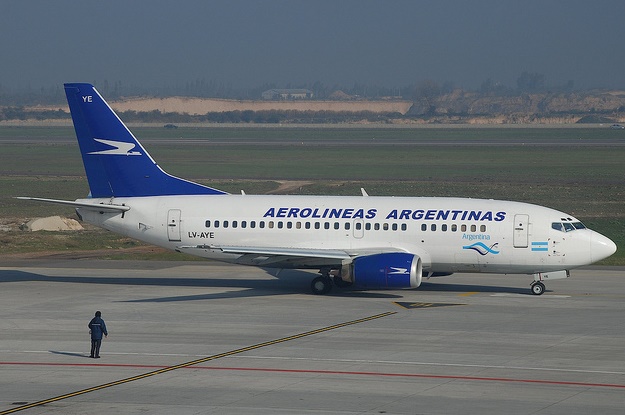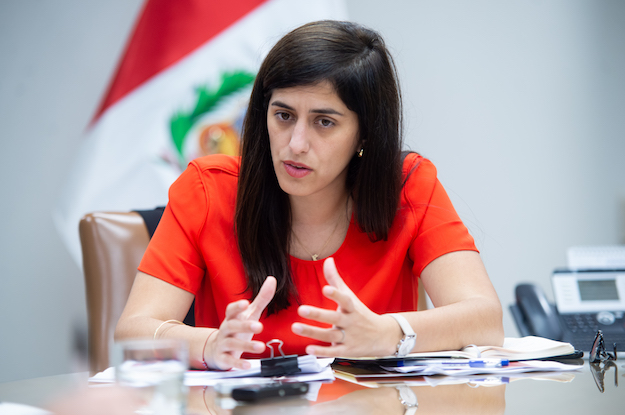Last year was a good one for global airlines. Thanks to falling fuel prices and an increased demand for air travel, the industry earned an estimated $33 billion in 2015. Carriers around the globe earned near-record profits.
Not so in Argentina, where according to official figures state-run Aerolíneas Argentinas operated at a loss of nearly $10 million through the first eight months of the year. The airline is now expected to need financial support of around $1 billion in 2016, or roughly half of what the government spent on education in 2015.
Argentina’s President Mauricio Macri has vowed to put Aerolíneas Argentinas on a path to profitibility, promising to address the public subsidies on which Aerolíneas relies as part of a broad range of economic reforms. But turning Aerolíneas around will not be easy; structural challenges – and a long history of instability – will be difficult to overcome.
Aerolíneas Argentinas has closely followed the ups and downs of Argentina’s economy for the last several decades. Unfortunately, that has generally meant trying times. After suffering through hyperinflation in the 1980s, the airline was sold to Spanish airline Iberia, only to continue to lose money and get traded several more times before 2008. Effectively bankrupt, the administration of Cristina Fernández de Kirchner, Macri’s predecessor, renationalized Aerolíneas. The move improved operational reliability, but at the astonishing price of nearly $4 billion – enough to buy TAM, South America’s largest airline, two times over.
The cost speaks to problems at the airline that may be painful to fix. According to recent media reports, 60 percent of the company’s losses are from flying abroad. One flight in particular, Buenos Aires to Miami, lost $90 million in 2014. Flights to Cancun, especially in business class, are reportedly filled with employees traveling for free. Why? High-margin business travelers, the bread and butter of globally competitive airlines, rarely fly on Aerolíneas. Historically, these passengers avoided the airline because of old planes and irregular schedules. Even with recent improvements, Aerolíneas faces stiff and entrenched competition from American Airlines and LAN, among others. Instead, the airline relies on sending price-sensitive tourists to the U.S. and Europe.
Generous labor contracts and overstaffing also add to the billion-dollar problem. Crew members on flights to Madrid and Rome are allowed to stay up to a week in luxurious accommodations. And Aerolíneas has over 160 employees per plane, whereas other major U.S. and Latin American airlines have between 70 and 100.
Macri’s plan to address some of these issues begins with Isela Costantini, who took over as head of Aerolíneas in January. As the former head of GM Argentina, Uruguay and Paraguay, Costantini was known for working constructively with automotive unions and increasing worker efficiency.
Costantini has ambitious plans to turn the airline around. She is already renegotiating all contracts put in place by the Kirchner administration, including prior commitments for plane purchases from Boeing and Airbus. One contract has been canceled – an agreement with a small Argentine airline, Sol Líneas Aéreas, that guaranteed its profits for running feeder flights, regardless of demand. By operating its own flights, rather than using Sol’s planes, Aerolíneas will save 80 percent on the cost of those flights.
Costantini has promised the Macri administration that she can reduce the company’s operating deficit to zero within the next four years. Though some in Argentina have argued for a plan that quickly cuts loss-making routes, dramatically shrinks the airline, and possibly re-privatizes it, both she and Macri are looking for alternatives to privatization. This will not be a simple cost-cutting exercise, as some have suggested.
There is hope that Costantini can succeed, similar to the optimism surrounding Macri’s broader economic reforms. But the reality of both the Argentine economy and Aerolíneas Argentinas’ current condition suggest a long journey ahead. Seatbelts fastened.
—
Juan Navarro-Staicos is a Senior Analyst with OMERS Capital Markets in New York, where he focuses on global macro investing. The opinions and ideas set out in the artical are the personal opinions of the author, and do not necessarily reflect those of OMERS.
Any opinions expressed in this piece do not necessarily reflect those of Americas Quarterly or its publishers.






